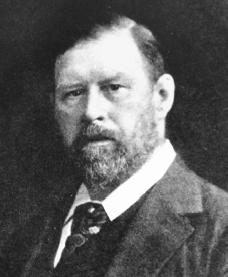In his 1908 “Creative Writers and Day-Dreaming,” Sigmund Freud asserts that peoples’ phantasies could be associated with mental illness. He states, “If phantasies become over-luxuriant and over-powerful, the conditions are laid for an onset of neurosis or psychosis” (424). Bram Stoker’s Dracula is full of “over-luxuriant” and “over-powerful” descriptions that reveal his obsession with the changing gender roles of the time.

For instance, when Jonathan Harker is being cornered by three, sexualized, vampire women, Stoker uses intense animalistic and sexual descriptions to set the scene. He writes from Jonathan’s perspective, “There was a voluptuousness which was both thrilling and repulsive and as she arched her neck she actually licked her lips like an animal, till I could see in the moonlight the moisture shining on the scarlet lips and on the red tongue as it lapped the white sharp teeth” (45). By saying that she “lapped” her teeth with her tongue Harker describes her in a way that resembles that of a dog. The woman is clearly threatening and holds the power in the scene, but she is also sexualized. Harker goes on to say, “Lower and lower went her head as the lips went below the range of my mouth and chin and seemed about to fasten on my throat” (45). He then “closed [his] eyes in a languorous ecstasy and waited – waited with beating heart” (96). There is a passionate sexual atmosphere in this scene because Jonathan waits in “ecstasy” anticipating the touch of the woman’s “scarlet lips.” By sexualizing this scene, and creating an intense feeling of Jonathan’s anticipation, the scene seems to be one of “over-luxuriant” descriptions and passion. Furthermore, Jonathan is intrigued by the woman’s erotic nature, considering that he uses terms that would connect her with a canine.
Freud might suggest that Jonathan’s anticipation reveals an inner desire for erotic sexual relations with a powerful woman. This would connect to The Longman Anthology’s description of the role of women during the Victorian Era. Many women had been seen as “physically and intellectually inferior, a ‘weaker sex,’” but women were starting to ease their way into a new role during the 19th century (1061). In conjunction with the challenge to the “weaker” role of women, masculinity was also being challenged. When women had been seen as the “weaker” sex, the man was supposed to be the dominant, powerful figure. The expectations of how women and men were supposed to act individually, but also in relationship with each other, were changing during the 19th century, and Bram’s depiction of Jonathan Harker and the vampire women could be interpreted as the 19th-century challenge to conventional gender norms.
Going back to what Freud said about there being only a slight difference between phantasies and mental illness challenges the audience to question Bram’s mental state. Since The Longman Anthology asserts that inversions of the conventional relationships between men and women were popular in Victorian literature, it would be logical for Bram’s novel to not only address gender norms a few times throughout the book, but to intentionally refer to these gender inversions as a motif–which it does. Additionally, regardless of whether Bram was sane, his intentional use of inverted-gender-norm motifs reveals that he was phantasizing about them, and perhaps his phantasies were so passionate that they led to a mental illness. If that was the case, it would just be stronger evidence for how influenced 19th-century society was by the changing gender roles. Therefore, readers can determine that Dracula is Bram’s critique of conventional gender norms during the Victorian Era, and the audience can use Dracula to analyze the roles of feminity and masculinity as the 20th-century was getting ready to begin.
